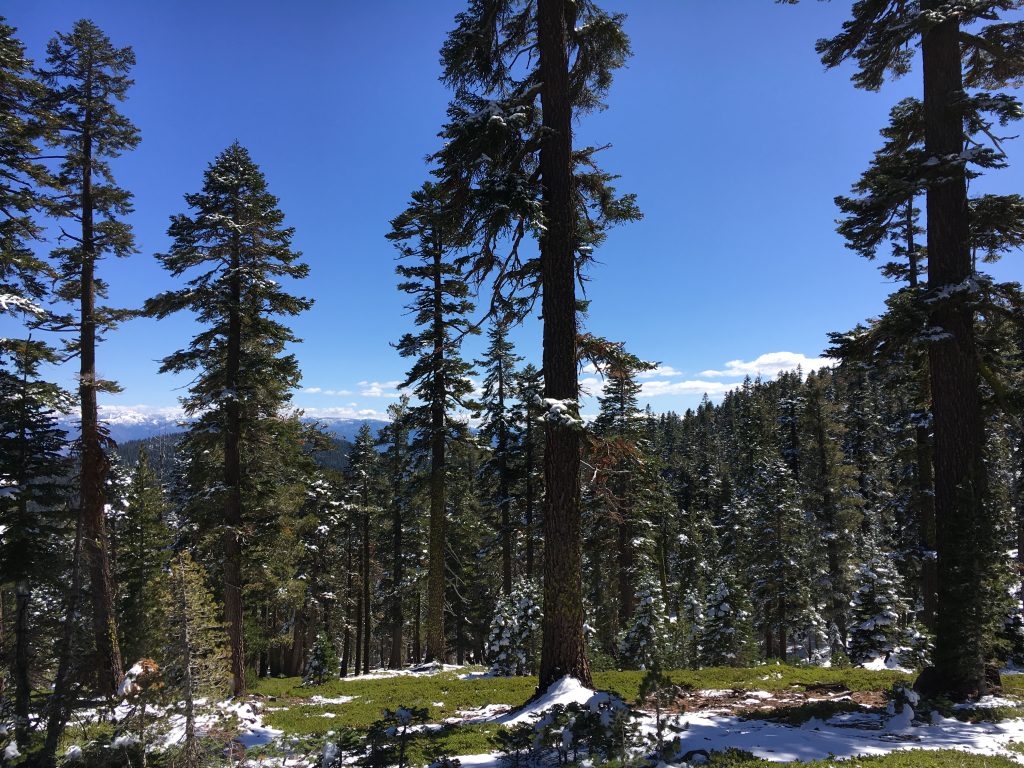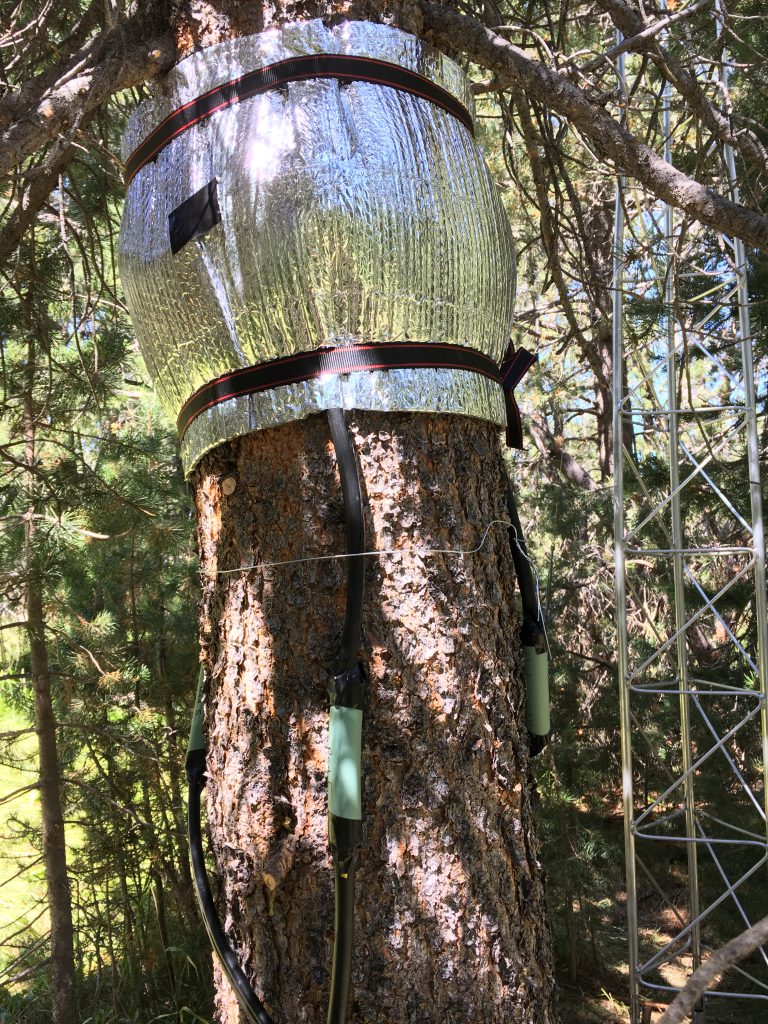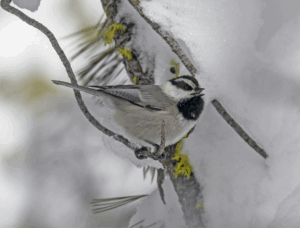
Trees in the Sierra Nevada drink a lot of water. But they don’t drink at the same rate all year round. Instead, scientist Ava Cooper found, during the spring they drink and drink and drink while the snowpack melts all around them. Then, after the snowpack melts away, their drinking slows down as they head into dry summer.
As warming climate shortens the duration of winter snowpack, it also shortens the trees’ drinking party. That, in turn, affects the amount of water that flows down mountain streams, into foothill reservoirs and, eventually, out our faucets.
Exactly how much do these changes — and many more caused by climate change — affect that flow of water? Cooper and other researchers are trying to figure that out, even as climate change makes that flow more erratic, with more frequent summer droughts, less wintertime snow, and bigger wintertime floods. The answers they find can help improve forest health, reduce vulnerability to wildfire and better manage the water that comes from that snowpack to slake more than 60 million people in the American West.
White pine and red fir trees in the Sagehen Creek area of the Sierra Nevada, north of Truckee, Calif., offered some clues to this complex relationship in a three-year study that led Cooper to earn a master’s degree from the University of Nevada, Reno. On the ridge where she conducted her study, summertime air smells of dry pine needles and cool mornings yield chickadees’ “cheese-burger” calls. During the wintertime, winds blow rivers of water from the Pacific Ocean, then dump them as snow.
“You can look at trees as straws,” said Cooper. Springtime brings warmer temperatures, snow melts into the ground, trees wake up from their wintertime slumber, their needles start photosynthesis, and their roots start sucking. Sap — not the thick, gooey kind that drips onto your car, but water slightly thickened with nutrients — starts flowing through their veins.
“The snow is a reservoir that provides water to the soil, and trees use that water,” she explained.
But as wintertime temperatures warm, precipitation falls more often as rain instead of snow. Trees are not as efficient at drinking wintertime rain as springtime snowmelt, Cooper found, after tapping sensors into the trees to measure the sap flowing. Wintertime rain soaks into the soil but, due to a variety of atmospheric factors, trees are not “awake” to drink very much, she concluded.
“You need this golden timing of snowmelt and [other related atmospheric factors] for the trees turning on [and] for photosynthesis … to start,” Cooper explained.
When rain comes earlier in the season, water that might have been sucked up through the straw instead flows into creeks, rivers and, sometimes, water-supply reservoirs.
But, how much?
Warming climate means more water escapes
Increasingly, the answer is too much, and too early, to be stored in reservoirs and used later in summer, when westerners need that water.
By studying the flow of tree sap and many other related processes, researchers can learn enough to accurately predict the flow of water into streams and, eventually, into reservoirs, said Adrian Harpold, a UNR hydrologist and the lead scientist on the project.

Downstream from Sagehen Creek, reservoirs collect snowmelt and rain run-off. People who manage reservoirs have noticed the timing of streamflow into those lakes is changing, and they’re looking for better tools to help them forecast what’s coming. Better forecasting would help them manage the water more efficiently. Ideally, they could store more water in reservoirs to use during droughts, but still keep reservoir levels low enough to stop wintertime floods.
Recent events highlight these twin concerns. The drought of 2012-16 cost well more than $3.8 billion to California agriculture alone. On top of that came damage to forests, native fish populations, groundwater levels and land subsidence that could take decades to recoup, according to a study led by Jay Lund of the University of California, Davis. On the heels of that drought, in December 2017, a relatively warm wintertime rain poured over Sierra snow and swelled rivers all along the mountain chain. The Truckee River brought widespread flooding into Reno and Sparks months earlier than usual historical patterns.
As researchers like Harpold and Cooper search for the elements of better streamflow forecasting tools, they’re finding some puzzling contradictions.
Looking for patterns, finding puzzles
One of the contradictions is this: Trees are less able to drink wintertime rain than springtime snowmelt, so when it rains in the winter, what the trees can’t drink flows into streams. So overall, wintertime rain should provide more water to the system. But it doesn’t. Instead, wintertime rain puts proportionately less water into the system than does snow that melts in the spring.
“Snow is a more efficient generator of streamflow,” Harpold said.

Changes to timing and volume of water flow, Harpold added, may be the results of contradictory mechanisms.
“We have some understanding of why streamflow timing is changing and how to quantify that, but the counteracting effects on streamflow volume are going to be a little more challenging to tease apart,” Harpold said during a talk delivered at the University of Saskatchewan. “Some of these mechanisms might counteract. Thinking about which mechanism is occurring where is going to be important for our mitigation strategies.”
In addition, much of the team’s work bumps up into questions of biology that also remain unanswered, Harpold said. How and where trees get water, where trees put the carbon they draw from the atmosphere, the role of more atmospheric carbon dioxide, the action of solar radiation in the melting of snowpack somehow work together to control the timing, volume and intensity of water flowing out of the Sierra Nevada and into our water supply.

“How complex do we need to represent this?” Harpold mused. For many of these puzzle pieces, researchers still don’t have good measurements. “Our models aren’t even capable at this point of answering most of these questions.”





